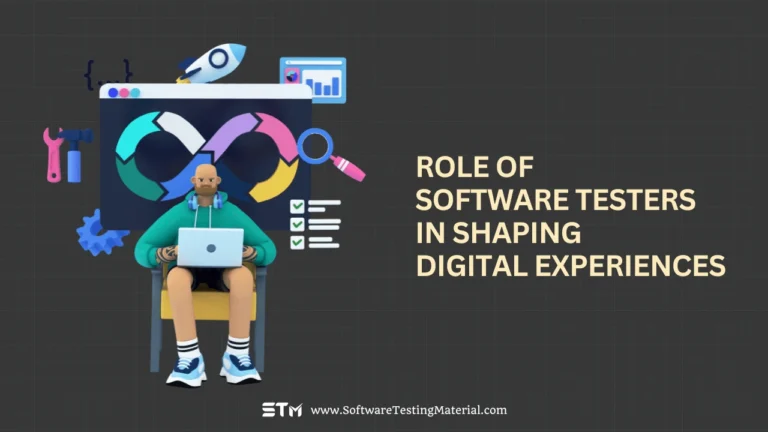Common Negative Scenarios in Software Testing
Software is one of the most critical components of IT operations. Due to the growing complexity of applications, companies are investing heavily in software testing.
At present, with the current CAGR of 9.1%, the software testing market valuation is projected to hit USD 83.64 billion by 2030. However, despite advances in testing tools, human error continues to plague development cycles.
Negative scenarios in software testing refer to testing what happens when users do unexpected things with your software. If these scenarios aren’t tested properly, it can lead to all sorts of disastrous consequences. And the cost of fixing quality issues after release can add up over time.
In this article, we will discuss common negative testing scenarios to help you build more robust applications.
Importance of Negative Testing
Negative testing is an integral part of software testing for several reasons:
- Prevents Data Corruption: Bad inputs can corrupt databases if not handled properly.
- Improves Security: Many security breaches start with unexpected inputs that exploit vulnerabilities. In 2024 alone, 1.35 billion individuals fell victim to data compromises.
- Enhances User Experience: Nothing frustrates users more than mysterious crashes or error messages.
- Reduces Support Costs: Fewer bugs mean fewer customer service calls and support tickets.
- Protects Your Reputation: Software that crashes easily damages your company’s image.
The most serious software failures often come not from failing to implement features correctly, but from failing to handle unexpected situations.
Common Negative Scenarios in Software Testing
Let’s explore the most important negative scenarios you should test for:
Edge Cases
Edge cases are situations that occur at the extreme limits of what your software was designed to handle. These are unusual but possible scenarios that fall outside normal operating parameters but still need to be accounted for.
For example, if your app handles user ages between 18-100, edge cases would include users exactly 18, exactly 100, users under 18, and users over 100. Edge cases can reveal assumptions in your code that weren’t obvious during regular testing.
To fully understand the extent to which overlooked edge cases can create problems, let us consider game developers. If they don’t test how the reward system works after several hours of continuous play, or how excessive rewards affect player behavior, they might unintentionally end up creating addictive gameplay.
In fact, this oversight led many top video game development companies like Epic Games, Microsoft, Roblox, and Activision Blizzard to face video game addiction lawsuit claims. The allegation is that these companies deliberately designed games like Minecraft, Fortnite, Call of Duty, and Roblox to encourage addictive behavior.
Lawsuits argue that game developers used behavioral psychology research to enhance the addictive qualities of these games, driving both in-game spending and excessive playtime, explains TruLaw.
For software testers, edge case testing requires imagination and skepticism. You should identify all possible extremes of your application’s parameters and test them rigorously.
This includes minimum and maximum values, empty states, resource limitations, and unusual user behaviors that might rarely occur but could cause significant problems when they do happen.
Input Validation Failures
Input validation failures happen when your software accepts data, but it shouldn’t. This occurs when your application doesn’t properly check what users enter into fields, forms, or uploads. For example, a user might enter text in a number-only field, paste a script into a comment box, or upload an executable file disguised as an image.
These failures can cause crashes, data corruption, or unexpected behavior. Common input validation issues include accepting negative numbers when only positive ones should be allowed or letting special characters slip into username fields.
Another problem is not limiting file upload sizes, which can lead to crashes or security vulnerabilities. These issues may seem minor, but they can cascade into major problems when they interact with other parts of your system.
Good input validation checks both the format (is it the right type?) and the content (is the value reasonable?) of all user-supplied data before processing it.
Security Vulnerabilities
Security vulnerabilities are weaknesses that allow attackers to compromise your software’s data or functionality. These often result from negative testing gaps where developers didn’t consider how malicious users might abuse the system.
Attempting to inject malicious code (e.g., SQL injection) into input fields is just one example. Other common vulnerabilities include cross-site scripting (XSS), broken authentication, sensitive data exposure, and insecure deserialization.
Security vulnerabilities often ripple through systems – what starts as a small hole can lead to complete system compromise. Worldwide, the volume of ransomware attacks keeps rising. In 2024, the FBI reported billions in financial losses due to ransomware payments and system recovery costs affecting organizations of all sizes.
Testing for security vulnerabilities requires the tester to think like an attacker and attempt to break the system’s defenses through every possible entry point.
Securing Your Software’s Blind Spots
The takeaway? Always anticipate the unexpected. Build negative testing into your development lifecycle from day one. Test edge cases, validate all inputs, and actively probe for security weaknesses before users or attackers find them.





